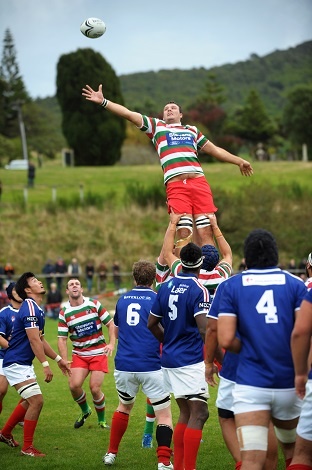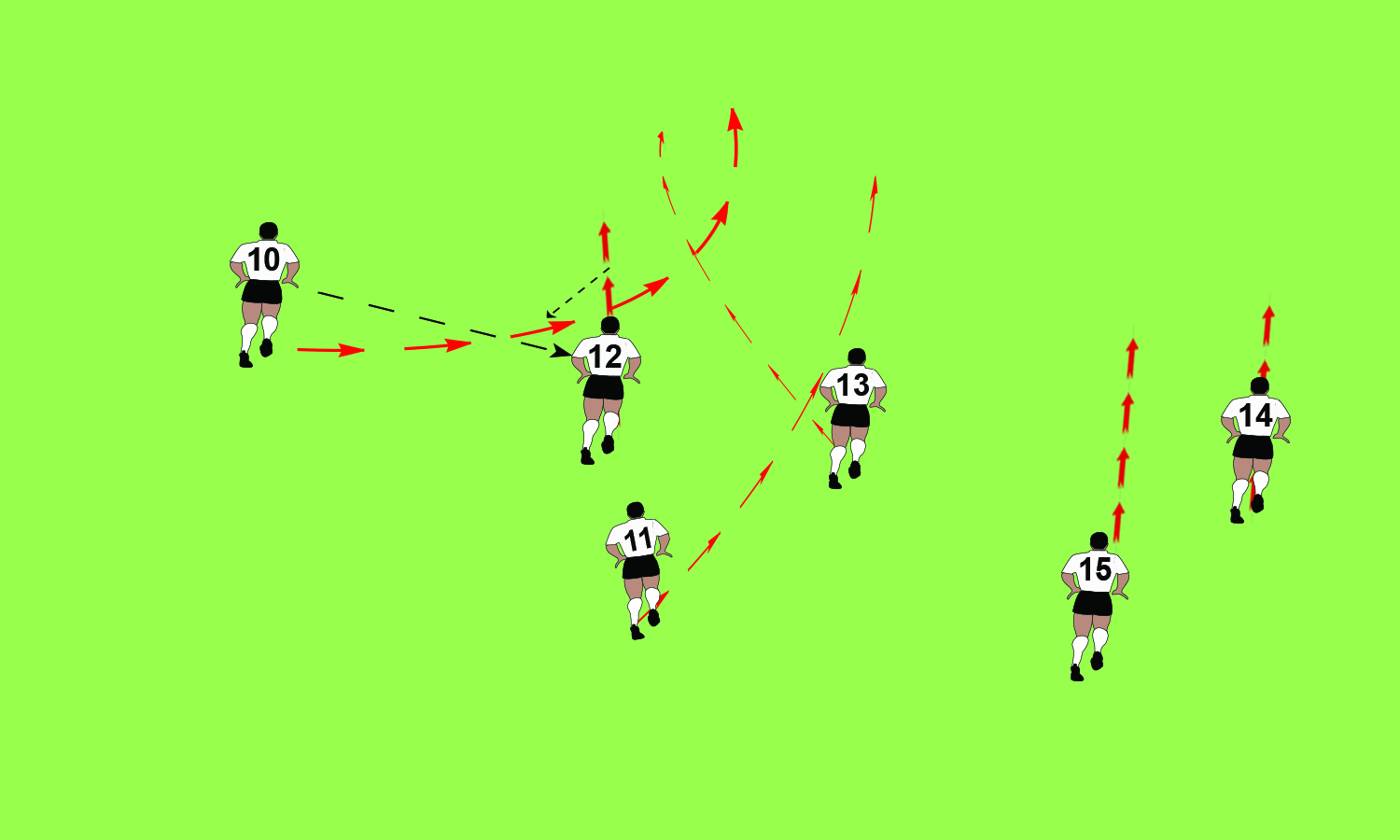- Rugby Toolbox
- Resources & Education
- Learn more
- Articles
- Snook on Coaching
- Back Strike Plays at the Lineout
- Ruck & Run Drill
- Playing Philosophy – Ruck & Run Coaching Components
- Playing Philosophy – Spread the Forwards
- Playing Philosophy – A forward behind the ruck
- Playing Philosophy – Ruck & Run
- Playing Philosophy – An idea!
- The Breakdown
- Building Positivity [3]
- Building Positivity [2]
- Building Positivity
- Fitness and Game Related Activities
- Getting the Head Working
- Missiles are Dangerous
- Use of Video
- Winger Attacking Outside First-Five
- Player Profiling
- Selection
- Fitness Away from the Team Session
- Playing Philosophy (Pre season Prep)
- Coaching the Coaches
- The Rugby Coordinator and Pre-Season Preparation
- Why Not Use Tap Penalties More Often?
- Why Kick the Ball Down the Middle of the Field?
- Defending the 5 Metre Lineout Drive
- Scoring from the 5 Metre Lineout
- What are the Kicking Team Aiming to Achieve from Halfway Restart
- Should We Practice Scoring Tries?
- Team Culture
- Looking After Your Players
- Coach Survival Tips
- Under 11/13 – Backline Defence
- Under 11/13 – Ruck Defence
- Under 11/13 – Back Attack
- Under 13 – The Counter Attack
- Under 11/13 – The Maul
- Under 11/13 – Lineouts
- Under 11/13 – Decision Making
- Under 11/13 – Support Play
- Under 11/13 – Dive Pass and More
- Under 11/13 – Drop & Grubber Kick /Highball Catch
- Under 11/13 – Front on Tackling
- Under 11/13 – Contact – Getting Up – The Ruck
- Under 11/13 – The Coaching Session
- Under 8/10 – Using Space
- Under 8/10 – Kicking
- Under 8/10 – Contact and Picking Up the Ball
- U8/U10 Draw & Pass and Sidestep
- Under 8/10 – The Tackle
- Under 8/10 – The Coaching Session
- Under 7 – Test Your Coaching – Support Play
- Tap Pass and Swerve U7
- Ball Familiarisation; Passing & Receiving
- Activities for the Non-Contact Tackle
- Under 7 – The Coaching Session
- Coaching Teenagers – After the Ruck
- Coaching Teenagers – The Practice Session
- Coaching Teenagers – Best Practice
- Coaching Kids – Best Practice
- Plays from a Tap Penalty
- Running Plays from a 5 Man Lineout
- Driving Plays from a 5 Man Lineout
- Strike Plays at the End of the Lineout
- Back Strike Plays at the Lineout
- Wide Strike at the Scrum (2)
- Wide Strike at the Scrum
- Midfield Attack at the Scrum
- No 8 Plays at the Scrum (2)
- No 8 Plays at the Scrum
- The Cut Out Pass
- Skills to Penetrate (2)
- Skills to Penetrate
- Movements to Penetrate
- Patterns to Penetrate
- Contact and Continuity
- Keeping the Ball Alive Out Wide
- Pre Season Support Activities
- Checklist
- Understanding the game
- The Playing Philosophy
- The Lineout
- Overview
- Team Profile
- Start Now!
- Backrow
- Nine and Ten
- Rugby-related Fitness Activities
- The Psychological Edge
- Open Field Play
- Key Performance Indicators
- Improving Team Performance
- Backline Attack Concepts
- Tactics at Phase Play
- Playing Philosophy
- The ‘Stop Focus’
- Kick Attack
- Clearing the 22
- Wide Attack at Phase
- Player Focus
- Scrum Preparation
- Lineout Preparation
- Back Attack Preparation
- Sevens Preparation
- Sevens Kick Offs
- Sevens Scrum and Lineout
- Sevens Attack Patterns
- Sevens Defence
- 7's Selection and Game Planning
- Coaching and Leadership
- How the Game Evolves
- Changing Within the Game
- Learning from the Television.
- Using Tap Penalties Wisely
- Defence Drills
- Defence Drills for Tight Five
- Team Defence and TUB’ing
- Establishing Patterns from the Ruck
- Structured Phase Play
- Structuring Phase Play on the Run
- Coaching Roles
- Structuring a Close in Tackling/Defensive Session
- Coaching in Threes
- Attacking Back Play
- Kick Off Chase
- Wrap Around Back Plays
- Lineout Plans
- Looking and Learning
- Motivating Your Players
- Scrum Attack
- Refocusing the Team
- Monitoring the Progress
- Learning the Game
- Playing to the Laws
- Small is OK
- Decisions After the Tackle
- Improving Your Coaching
- Food for Thought
- More Food for Thought
- Passing & Catching
- How Ireland Nearly Beat the All Blacks
- The Progressive Coach
- Try Something New
- Encouraging Excitement
- The Mental Approach
- Where to Start
- Being the Best You Can Be
- Off the Ball Decisions
- Lineouts Difficult to Master
- Decisions on the Run
- Rucking and Rolling
- A Successful Approach
- Gaining Clarity
- Manipulation vs Physicality
- Beating the Drift
- To Ruck or Not to Ruck
- Stopping the Lineout Drive
- Fine Tuning the Planning
- It's a Running Game
- RugbySmart 2015
- Using the Shoulders
- Loosehead Prop / Tighthead Prop
- Position Specific – Hooker
- Position Specific – Lock
- Position Specific – Blindside Flanker
- Position Specific – Openside Flanker
- Position Specific – No 8
- Position Specific – Halfback
- Position Specific – First Five Eighth
- Position Specific – Second Five Eighth
- Position Specific – Centre Three-quarter
- Position Specific – Wing
- Position Specific – Fullback
Back Strike Plays at the Lineout

Strike Plays at lineout time require a few key components if 1 on 1 situations similar to the scrum are going to occur.
The key aspect is to create situations whereby the defending player at the end of the lineout is taken out of play as much as possible therefore requiring the backs to tackle the man that they are opposing when the lineout is formed.
There are three components which can be applied to achieve this.
1- Throw the ball to the back of the lineout so that the players in that zone are required to participate in the defending (lifting / holding for the drive / holding until the ball leaves the lineout). This should mean the player defending at the tail is always chasing after the ball which has moved beyond him from the first pass.
2- The alignment of 10 when they are receiving from 9 is as flat as possible (timing) and as wide as the halfback’s pass allows. This will also mean that the defender is running sideways to chase after the ball and not forward putting pressure on the first receiver which allows the defensive backs to begin their drift.
3- There can be a decoy runner in the channel inside or outside 10 which will hopefully hold the forward defender and with a bit of luck the first back defender.
If your team has the ability to put all three together then there is a good chance there will be success at the strike point assuming the passing, timing, angles, appropriate depth, support and coordination of all the pattern occurs!
Back play can be difficult to coach. In order to be successful backlines have to put defence under pressure. To do this, players have to put themselves under pressure by performing near to the defenders.
Players can only acquire the timing and confidence necessary for this by practicing under pressure similar to that they will face in games.
PLAYS [ These are wide plays from All-Man lineouts]
(Make up your own names)
“Misses”

These may be 10 missing 12, 12 missing 13, 13 missing 15, or whatever you plan.
*Aim: To threaten right along the line with the backline being flat and forcing the tackler to stay on a particular attacker.
*Best: in attacking half.
*Explanation: As described above. Flat and wide formation. Start with 10 missing 12 and 15 coming in. The blindside winger can be an additional runner and 12 must get wide to support.
*Variations: The variations are best out wide with the flat and wide formation inside. As an example: 10 cuts 12 and passes flat to 13 / 12 is already looping and running wide off 13 / 10 wraps hard after their pass so they can be a decoy outside 13 / 12 calls for the ball which is passed across 10 to the blindside winger / the winger has 12, 15 and the openside winger in support / 10 can get in the pocket just behind or inside the ball carrier / you may wish to make a plan for these three players as well.
“Switch-Dummy”

*Aim: to hold the defence in the midfield with decoy runners before going wide.
*Best: on attack around the 22 when the defence will be more committed to man-on near the try-line.
*Explanation: 10 passes to 12 and wraps hard / 12 takes a direct line as though they are hitting up / 12 switches with 10 on the wrap / 10 is running laterally and dummy switches with 13 before straightening up / the blindside winger s in support of 10 as are 15 and the openside winger.
*Variations: the same play but 10 will switch with 13 who will be looking for a gap and an offload to a forward
“Miss-Switch”

*Aim: to get the ball wide quickly and cause confusion in the wide channels.
*Best: In the attacking half.
*Explanation: 10 cuts 12 and passes to 13 / 10 wraps hard on 13 / 12 has already taken a wide arc on their run outside 13 / 15 runs a decoy line inside 12 / 13 switches with 10 / 10 hits 12 across the blindside winger who has come outside 15 / 12 has an inside option to the blindside winger who has held their run or an outside option to the openside winger / 10 will support in the pocket behind the ball carrier.
*Variations: 10 pass to 15 or the blindside wing.